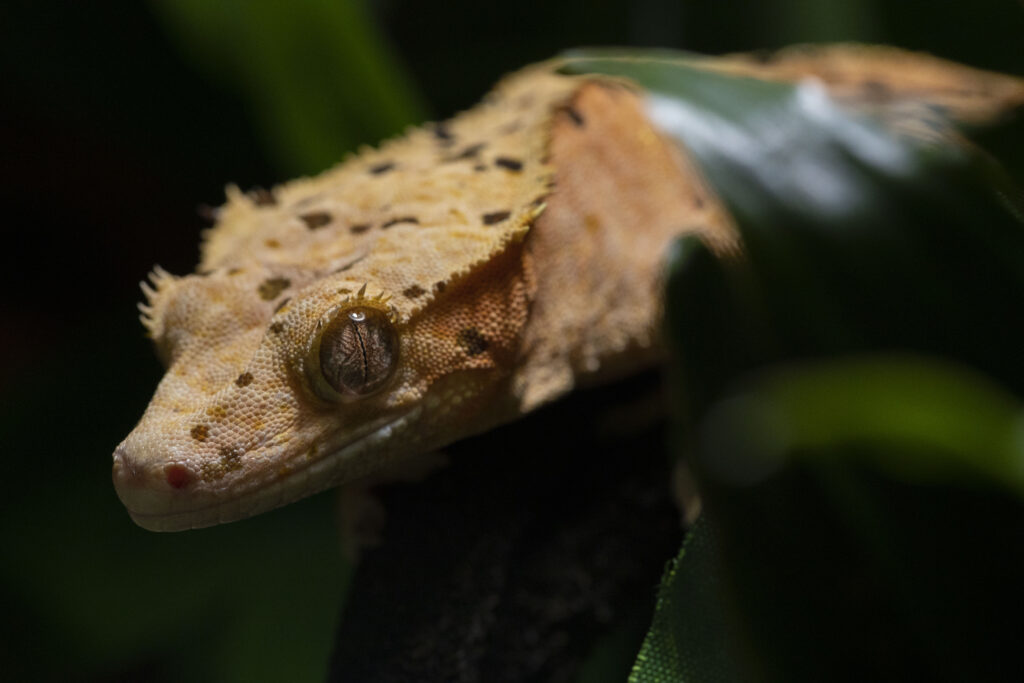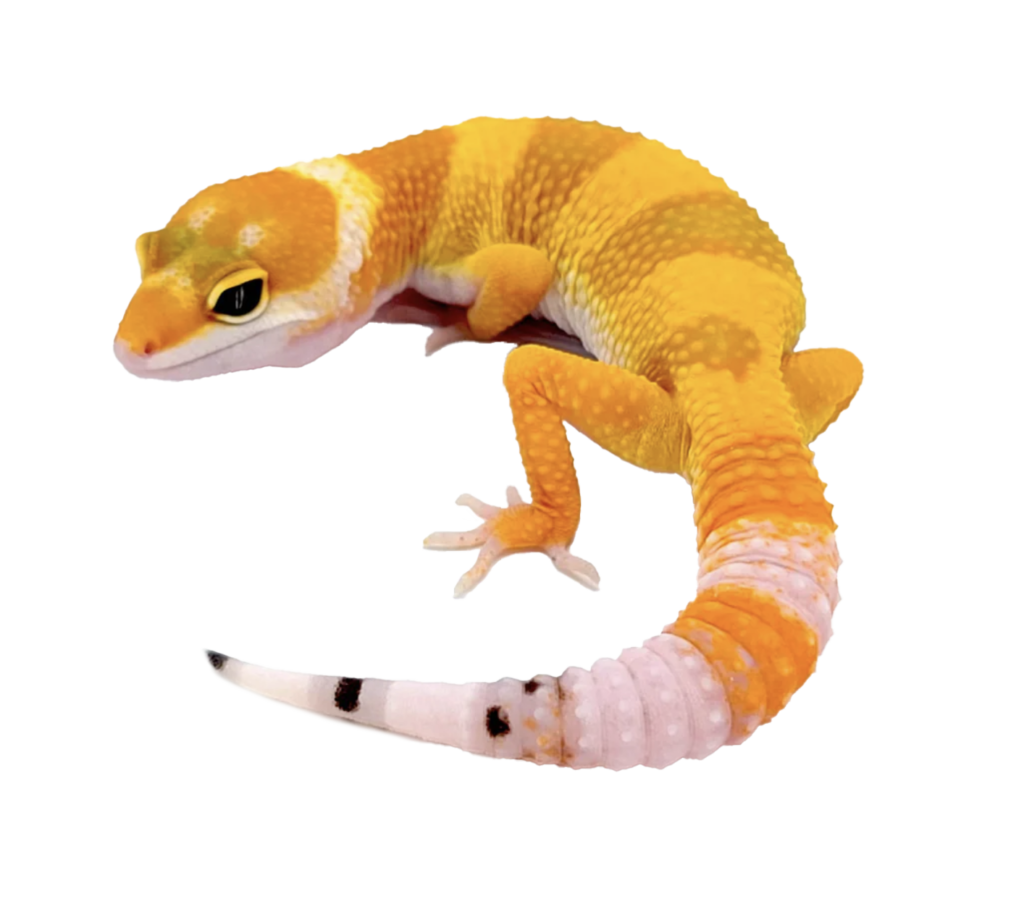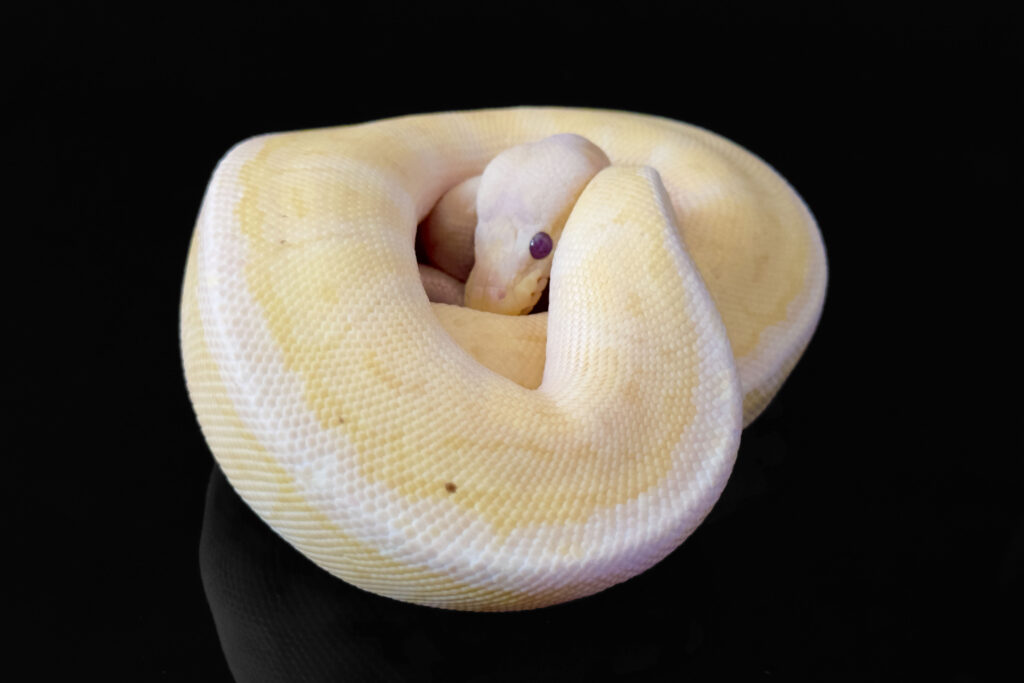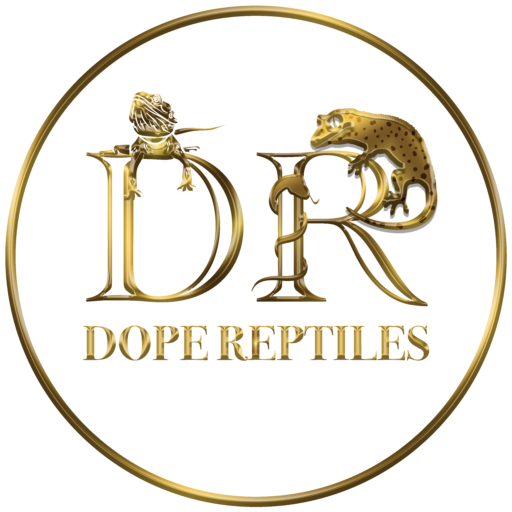Care Sheets
Care Sheets
Crested Geckos
Crested Geckos are a species of gecko native to New Caledonia. They have become popular pets due to their docile nature and easy care requirements. Here’s a care sheet for these creatures:
Enclosure: The enclosure should be at least 18 inches tall and 12 inches wide. It can be made of glass or plastic. Use coconut fiber or reptile bark as a substrate, and provide plenty of hiding spots and climbing opportunities.
Temperature and Lighting: The temperature should be kept between 70-80°F, and lighting should be provided for 12-14 hours per day. Not needed but you could also use a UVB bulb to provide necessary vitamin D3.
Feeding: Crested geckos should be fed a variety of insects and fruit-based diets. dubia roaches and crickets are good insect choices. Fruit diets can be purchased at pet stores we like to use Pangea crested gecko food and Rapashy.
Maintenance: Spot clean the enclosure daily, and deep clean it once per month. Provide fresh water daily or a water dish that is changed regularly.
As with all pets, research thoroughly before purchasing and caring for a Crested Gecko.

Gargoyle Geckos
Gargoyle geckos (Rhacodactylus auriculatus) are native to New Caledonia, and are fascinating and easy-to-care-for pets with distinctive markings and behaviors. Here’s a brief care sheet for Gargoyle geckos:
Housing: A 16-20 gallon tank with a screen top and a place to hide. Substrate should be coconut fiber or sphagnum moss.
Lighting: Gargoyle geckos do not require UV lighting.
Temperature: Keep the temperature between 73-80°F, with a basking spot around 85°F.
Humidity: Mist the tank twice daily to maintain a humidity level of around 70-80%.
Food and water: Gargoyle geckos eat a variety of insects including crickets, roaches, and mealworms. Much like Crested Geckos they can also eat fruit diets can be purchased at pet stores we like to use Pangea crested gecko food and Rapashy.
Handling: Gargoyle geckos are generally docile and can be handled regularly but ensure care is taken when holding them and they are not dropped.
With proper care and handling, Gargoyle geckos can grow to be beautiful, healthy, and long-lived pets.
As with all pets, research thoroughly before purchasing and caring for a Gargoyle Gecko.

Leopard Geckos
Leopard geckos are a popular reptile species for beginner reptile keepers. Here are some care tips to keep your leopard gecko healthy:
Housing: A 20-gallon tank is suitable for an adult leopard gecko. The tank should have a hiding space, a warm side (85-90°F) and a cool side (75-80°F), and a moist hide.
Substrate: Paper towels, reptile carpet, or tile are good choices for substrate. Avoid sand or loose substrate as it can cause impaction.
Feeding: Feed your leopard gecko insects like crickets, mealworms, or dubia roaches. They should be dusted with calcium and vitamin D3 twice a week.
Water: Provide a shallow dish of water at all times. It should be changed daily.
Lighting: Leopard geckos don’t require UVB lighting but they need a 12-hour light and 12-hour dark cycle.
Handling: Leopard geckos are relatively docile and can be handled gently. Avoid picking them up by the tail as it can detach and cause stress.
Overall, leopard geckos are low-maintenance and an enjoyable pet to keep.
As with all pets, research thoroughly before purchasing and caring for a Leopard Gecko.

Ball Pythons
Ball pythons are popular snakes kept as pets due to their manageable size, docile nature, and attractive pattern. Here are some fundamental care guidelines for ball pythons:
Housing: Provide a terrarium with a secure lid for your ball python. Hatchlings can start in a 10-gallon tank, while adults need at least 40 gallons. The enclosure should have a temperature gradient (80°F to 90°F on the warm side, 75°F to 80°F on the cool side) and a hiding place.
Food: Ball pythons eat appropriately sized mice or rats every 1 to 2 weeks. Provide them with a clean water dish as well.
Handling: Ball pythons can be held gently for short periods once they are comfortable in their new environment. It is essential to handle them with care and wash your hands before and after.
Maintenance: Clean the enclosure regularly, including the water dish, and provide fresh water daily.
Health: Watch for signs of illness, such as lethargy, loss of appetite, or abnormal shedding, and regular check-ups with an experienced reptile vet isn’t a bad idea either.
As with all pets, research thoroughly before purchasing and caring for a ball python.

